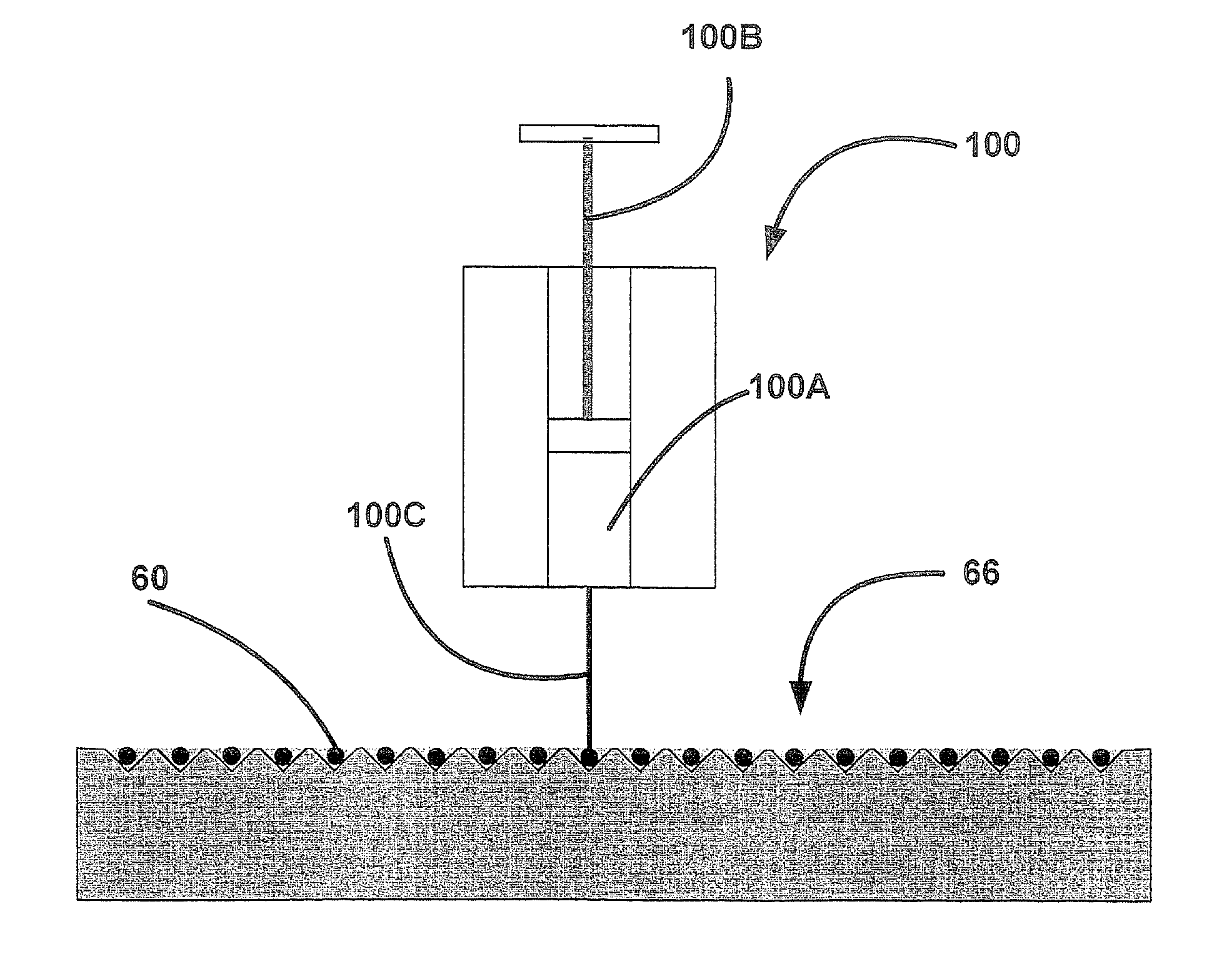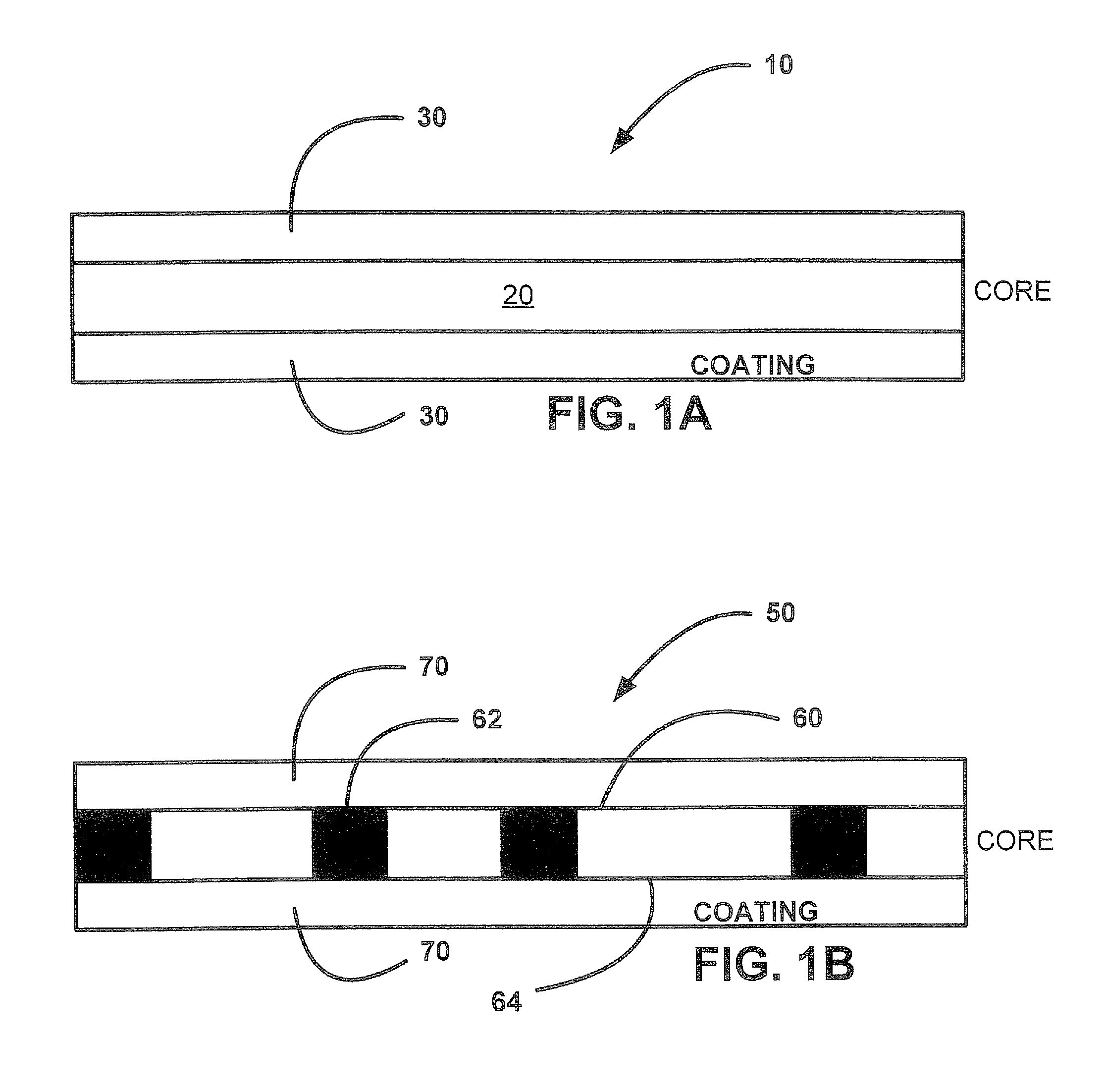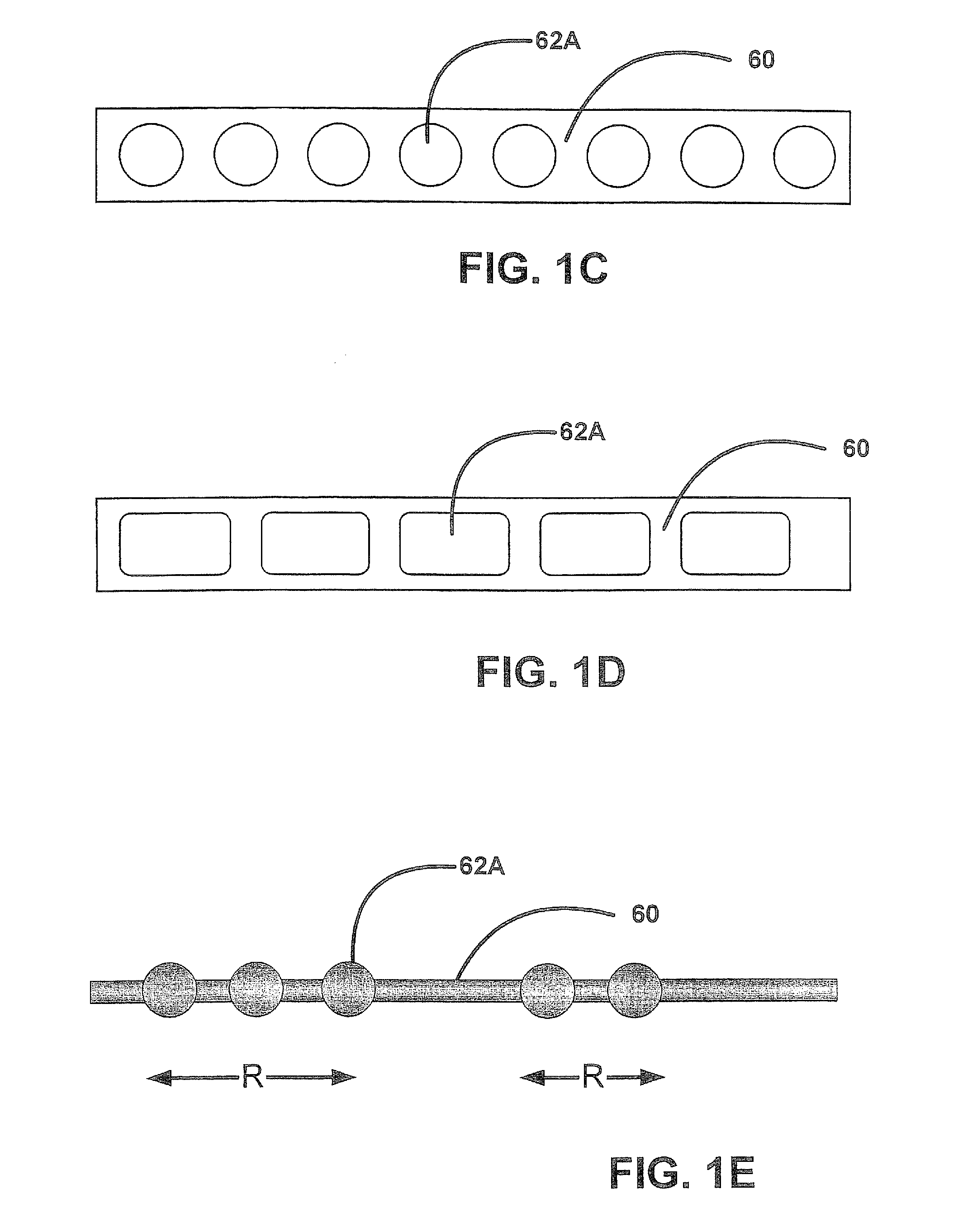Brachytherapy devices and related methods and computer program products
a brachytherapy device and computer program technology, applied in the field of ldr brachytherapy radiation treatment methods, systems and computer program products, can solve the problems of relative complex procedure, deviation in seed placement, and tendency of seeds to migrate, and achieve the effect of low dose ra
- Summary
- Abstract
- Description
- Claims
- Application Information
AI Technical Summary
Benefits of technology
Problems solved by technology
Method used
Image
Examples
example 1
[0104]In one illustrative example according to embodiments of the invention, radioactive Pd-103 in the form of palladium(II) chloride is mixed into a sol gel. The sol can then be dried to form a xerogel. Once the sol-gel based, patterned fiber is completed it can be coated with a biocompatible outer coating and sterilized for clinical use.
[0105]The pattern of radioactivity in the device could be determined by the specific requirements for a given patient, e.g. based on brachytherapy planning software. The proper patterning of the radiation pattern in the device can be controlled by a computer configured to translate the clinical brachytherapy prescription into the necessary deposition pattern of radioactivity in the final device.
[0106]Small globules (e.g., 5-500 nanoliters) of radioactive sol gel material can be deposited into wells in a micro-patterned suture material. In particular embodiments, the density of globules is about at least 2 globules per 5 mm to about 20 globules per ...
example 2
[0108]To 9.0 mL isobutyltrimethoxysilane (BTMOS) was added 1.0 mL ethanol, 300 μl water, and 50 μl 0.5 M hydrochloric acid. The mixture was stirred at room temperature for 1 hour. 1.0 mL N-(2-aminoethyl)-3-aminopropyltrimethoxysilane (AEAP3) was then added and stirring was continued for 1 more hour. The resulting solution can be used immediately or stored in a refrigerator for up to 45 days.
[0109]In order to add palladium(II) chloride, 0.0137 g of 5 wt. % PdCl2 in 10 wt. % hydrochloric acid (Aldrich) was added to 6.14 mL of the sol gel solution prepared above. This provided a 0.01% Pd (palladium metal) in concentration.
[0110]A 2.0 μl aliquot of the prepared sol gel solution containing Pd was applied onto a glass cover slide in a 12 mm circle. It was allowed to evaporate at room temperature for 2 hours uncovered. The material, now a viscous gel film, was then placed inside an oven and the temperature was increased to 70° C. at a rate of 5° C. / min. The temperature was maintained at 70...
PUM
 Login to View More
Login to View More Abstract
Description
Claims
Application Information
 Login to View More
Login to View More - R&D
- Intellectual Property
- Life Sciences
- Materials
- Tech Scout
- Unparalleled Data Quality
- Higher Quality Content
- 60% Fewer Hallucinations
Browse by: Latest US Patents, China's latest patents, Technical Efficacy Thesaurus, Application Domain, Technology Topic, Popular Technical Reports.
© 2025 PatSnap. All rights reserved.Legal|Privacy policy|Modern Slavery Act Transparency Statement|Sitemap|About US| Contact US: help@patsnap.com



